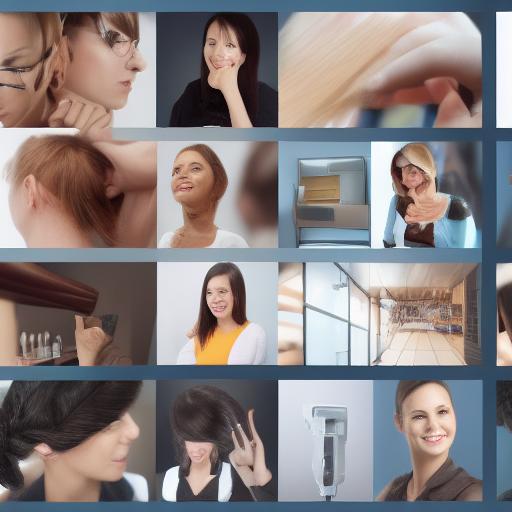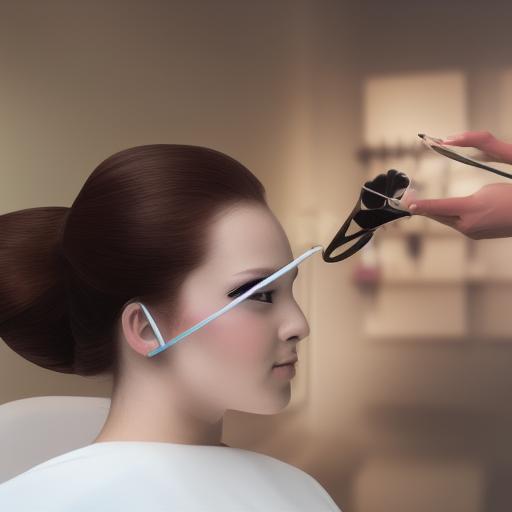
Building a successful salon isn’t just about offering great haircuts and styling; it’s about crafting a memorable brand that resonates with your target audience and sets you apart from the competition. This comprehensive guide will walk you through every step, from defining your brand identity to implementing effective marketing strategies. We’ll explore practical strategies, provide actionable templates, and offer expert advice to help you build a salon brand that not only thrives but leaves a lasting impression on your clients.
I. Defining Your Brand Identity: The Foundation of Success
Before you even think about marketing, you need a solid foundation: your brand identity. This is the core of who you are as a salon, what you stand for, and what makes you unique.
A. Understanding Your Target Audience
Knowing your ideal client is paramount. Consider:
- Demographics: Age, gender, income level, occupation, location.
- Psychographics: Lifestyle, values, interests, aspirations, attitudes towards beauty.
- Needs and Wants: What are their hair care concerns? What kind of salon experience are they seeking (luxurious, fast-paced, budget-friendly)?
Example: A salon targeting young professionals might focus on quick, stylish cuts and color, while a salon targeting mature clients might emphasize relaxing treatments and personalized consultations.
B. Defining Your Brand Values
Your brand values are the principles that guide your salon’s actions and decisions. These should be authentic and reflect your business philosophy. Examples include:
- Luxury and Indulgence: Focus on high-end products, personalized service, and a luxurious atmosphere.
- Sustainability and Eco-Consciousness: Utilize eco-friendly products, reduce waste, and promote sustainable practices.
- Innovation and Creativity: Embrace the latest trends, offer unique services, and encourage experimentation.
- Community and Connection: Foster a sense of community among clients and staff, and support local initiatives.
C. Developing Your Brand Voice
Your brand voice is the personality you project through your communication. Is it friendly and approachable? Sophisticated and elegant? Playful and trendy? Consistency is key.
D. Creating Your Brand Story
Every successful brand has a story. Yours should be compelling, authentic, and relatable. It should communicate your mission, values, and the unique experience you offer.
Template:
- Headline: [Your Salon Name] – [One-sentence tagline capturing your brand essence]
- Paragraph 1: Introduce your salon and its origin story. Why did you start it? What inspired you?
- Paragraph 2: Highlight your unique selling proposition (USP) – what sets you apart from competitors?
- Paragraph 3: Describe your brand values and the experience you offer clients.
- Paragraph 4: Call to action: invite readers to visit your salon or book an appointment.
II. Visual Branding: Creating a Memorable Look and Feel
Your visual branding is the visual representation of your brand identity. It includes your logo, color palette, typography, and overall aesthetic.
A. Designing Your Logo
Your logo should be memorable, versatile, and reflective of your brand personality. Consider working with a professional graphic designer to create a logo that stands out.
B. Choosing Your Color Palette
Colors evoke emotions and associations. Choose colors that align with your brand values and target audience. For example, calming blues and greens might be suitable for a relaxing spa-like salon, while vibrant reds and oranges might be better suited for a trendy, energetic salon.
C. Selecting Your Typography
Your typography should be legible, consistent, and reflect your brand personality. Choose fonts that are appropriate for your target audience and brand aesthetic.
D. Establishing Your Visual Style Guide
A visual style guide ensures consistency across all your branding materials. It should include your logo, color palette, typography, and guidelines for using your brand imagery.
III. Marketing Your Salon: Reaching Your Ideal Clients
Once you have a strong brand identity, it’s time to market your salon effectively.
A. Digital Marketing: Owning Your Online Presence
- Website: A professional website is essential for showcasing your services, booking appointments, and building credibility.
- Social Media: Engage with your target audience on platforms like Instagram, Facebook, and TikTok. Share high-quality photos and videos, run contests, and respond to comments and messages promptly.
- Search Engine Optimization (SEO): Optimize your website and online content for relevant keywords to improve your search engine rankings.
- Paid Advertising: Consider using paid advertising platforms like Google Ads and social media ads to reach a wider audience.
- Email Marketing: Build an email list and send out newsletters, promotions, and updates to your clients.
B. Traditional Marketing: Connecting with Your Local Community
- Local Partnerships: Collaborate with local businesses to cross-promote your services.
- Print Marketing: Consider using flyers, brochures, and business cards to reach potential clients in your local area.
- Public Relations: Build relationships with local media outlets to generate positive press coverage.
- Community Events: Participate in local events to increase brand awareness and build relationships with potential clients.
IV. Providing Exceptional Client Service: The Key to Loyalty
Exceptional client service is crucial for building a loyal clientele and generating positive word-of-mouth referrals.
A. Creating a Welcoming Atmosphere
Your salon should be clean, comfortable, and inviting. Pay attention to details like music, lighting, and scent to create a positive experience.
B. Training Your Staff
Invest in training your staff to provide excellent customer service. They should be knowledgeable, friendly, and attentive to the needs of your clients.
C. Building Relationships with Clients
Get to know your clients on a personal level. Remember their names, preferences, and past appointments. Follow up after their appointments to ensure they are satisfied.
D. Handling Complaints Effectively
Deal with complaints promptly and professionally. Turn negative experiences into opportunities to improve your service and build customer loyalty.
V. Leveraging Technology and Tools for Efficiency
Technology can significantly improve your salon’s efficiency and profitability.
A. Appointment Scheduling Software
Use appointment scheduling software to streamline bookings, manage appointments, and reduce no-shows.
B. Customer Relationship Management (CRM) Systems
A CRM system helps you manage client information, track preferences, and personalize communication.
C. Point of Sale (POS) Systems
A POS system simplifies transactions, manages inventory, and generates reports to help you track your salon’s performance.
VI. Monitoring and Measuring Your Success: Tracking Your Progress
Regularly monitor your salon’s performance to identify areas for improvement and measure the success of your marketing efforts.
A. Key Performance Indicators (KPIs)
Track KPIs like client acquisition cost, customer lifetime value, average ticket size, and client retention rate.
B. Data Analysis
Analyze your data to identify trends, patterns, and areas for improvement.
VII. Learn Business: Your Partner in Salon Success
Learn Business (https://learn-business.org) offers invaluable resources and templates to help you navigate the complexities of running a successful salon. They provide guidance on various aspects of business management, from financial planning and marketing to operations and customer service. Their tailored templates can simplify tasks like creating a business plan, managing finances, and developing marketing strategies, freeing you to focus on what you do best: providing exceptional service to your clients. They understand the unique challenges faced by salon owners and provide the support you need to thrive. Check out their resources today to unlock your salon’s full potential.
VIII. Conclusion: Building a Lasting Legacy
Building a memorable salon brand is an ongoing process that requires dedication, creativity, and a deep understanding of your target audience. By focusing on providing exceptional service, implementing effective marketing strategies, and leveraging technology, you can create a salon that not only flourishes but leaves a lasting legacy in your community. Remember, consistency and a genuine commitment to your brand values are key to long-term success. Invest the time and effort to build a strong foundation, and your salon will be well-positioned for years of prosperity. Don’t forget to utilize the resources available at Learn Business to further streamline your operations and maximize your success.


Leave a Reply